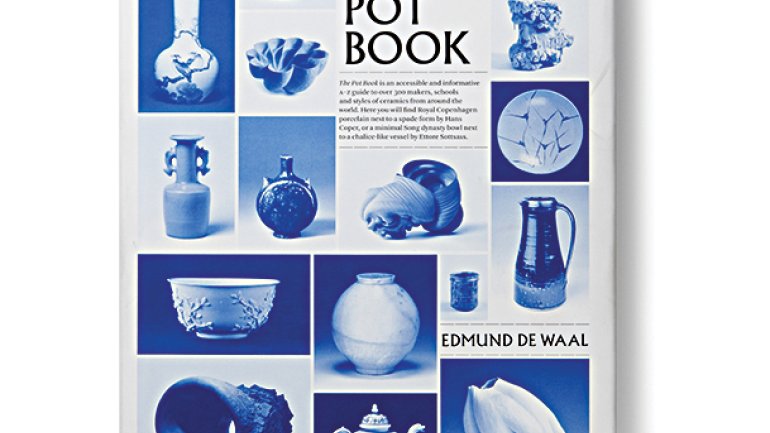Pot Luck
Pot Luck
Why did Edmund de Waal take on this book? He is one of the most articulate voices in British ceramics, a renowned ceramist, and a gifted writer who won the 2010 Costa Book Award for biography for his family tale, The Hare with Amber Eyes. Phaidon Press, for its part, is known for its smart books and high design standards.
The book is billed as an “A to Z overview” of makers, schools, and styles of ceramics. Yet herding 300-some pots alphabetically into a book with no historical, contextual, or conceptual framework is a project doomed from the outset: an airplane taking off with too little fuel to land. And yes, The Pot Book crashes.
The blue cover feels like a practical joke perpetrated by a 1970s photocopy machine. Inside, design is mechanical and dull. It mimics a lush coffee-table book with large format and one big image per page. But that demands excellent photography, which is rarely delivered.
Instead, the layout is oddly self-defeating. The pots in Grayson Perry’s triptych, one of the few masterpieces in the book, barely occupy 3 inches of an 8-inch-tall image. The details on his complex pots, including essential text, are unreadable. Small images also mean readers can’t properly appreciate glaze qualities and surface textures, while too many pots are photographed in the old museum style, with only the front rim showing, losing all sense of volume.
The coup de grâce, however, is the selection of pots. Gathering masterpieces could have been redemptive, but “great” pots are few. Nampeyo, the first matriarch of modern Native American pottery, known for her majestic Sikyatki-style flat-topped, narrow-mouthed jars, is represented by a crudely made, thick-walled flask, not from her hand, and poorly painted in 1925 when she was nearly blind.
Geert Lap is famous for his minimalist, measured, precise throwing; his pot is a slip-cast vase he designed for a factory; Lucie Rie is represented by a murky view of her studio. Minor works diminish Robert Arneson, Jim Melchert, Kawai Kanjiro, Bernard Leach, George Ohr, Betty Woodman, Shoji Hamada, and a host of others. Meanwhile, the unforgiving alphabetical sequence places pots opposite others that offer little or no contextual synergy. The result is little better than a Google search.
Garth Clark is an award-winning historian, writer, dealer, and auction specialist in ceramic art.

